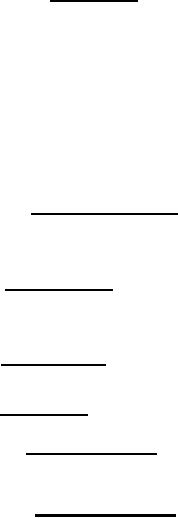 |
|||
|
|
|||
| ||||||||||
|
|  MIL-E-23457B(SHIPS)
(d) Maximum exhaust system back pressure . .
.
.
.
1 inch Hg.
(e) Sea water inlet temperature. . . . . . .
.
.
.
90F.
(f) Sea water outlet temperature . . . . . .
.
.
.
130F (maximum).
160F (minimum) to 190F
(g) Lubricating oil temperature from engine.
.
.
.
(maximum).
(h) Fuel temperature to engine
.....
...
. . 115F (maximum).
(i) Maximum intake air system
depression
using
clean filter elements:
(1) Naturally aspirated .
.....
...
. . 15 inch water.
(2) Turbocharged. . . . .
.....
...
. . 8 inch water.
3.4.2 Inclination. Unless otherwise specified (see 6.2.1) , the engine, accessory
#
components, and piping systems shall be capable of operating in accordance with all the
requirements of this specification and without loss of fluids, loss of lubricating oil
pump suction, and without the connecting rod and gears dipping into the oil under the
following conditions:
When the ship is
permanently trimmed down by the bow or stern up to 5 degrees
(a)
from the normal
horizontal plane.
(b) When the ship is
permanently listed up to 10 degrees to either side of
vertical.
(c) When the ship is
pitching 10 degrees up or down from the normal horizontal
plane.
(d) When the ship is
rolling Up to 45 degrees to either side of vertical.
3.4.2.1 Unless otherwise specified (see 6.2.1), the engine installation shall be
horizontal.
3.4.2.1 Threaded fastening. Threaded hardware parts shall conform to Handbook H28.
#
Nuts and other threaded fastenings on the engine and accessories shall be secured by wire,
lockwashers, cotter pins, clips, or other means in such manner as to positively prevent the
part working loose under operating conditions. Drain plugs shall be readily removable with
general purpose wrenches.
3.4.4 Accessibility.
Engine attached accessories such as pumps, blowers, turbo-
#
chargers, intake air coolers, etc. shall be secured in such a manner as to permit maximum
accessibility to the accessories and the engine. Engines shall be provided with openings
with removal covers in the frame and crankcase above the mounting flange for servicing and
examining the engine.
3.4.5 Timing marks. Means shall be provided to permit checking of valve and injection
#
pump timing. Means for timing and barring the engine over by hand shall be incorporated in
the engine design.
3.4.6 Craftshaft. Nuts on coupling flange bolts shall be accessible. Provision shall
#
be made on the free end of the crankshaft for attaching a torsiograph drive.
3.4.7 Shock resistance. When specified (see 6.2.1) the propulsion unit including the
#
engine, marine (if used) , attached and detached accessories shall meet the grade A
requirements of MIL-S-901 as modified in 3.4,7.1 through 3.4.7.2.5. Auxiliary engines
shall be tested under the shock requirements of the driven equipment.
3.4.7.1 Intended function. The intended function of a shockproof propulsion unit is
#
to continuously deliver power conforming to required performance characteristics throughout
and after being subjected to shock of the magnitude experienced during shock tests as speci-
fied in MIL-S-901. Further, a shockproof unit, when subjected to shock, shall not suffer
damage to the extent that it creates a possible hazardous situation such as fire or injury
to operating personnel, or such as to result in likely failure of major units if the unit
is not immediately shut-down for corrective action. When tested in accordance with 4.4.2.9,
the following damage shall not be permitted:
(a) Damage which causes or necessitates reduction of equipment output to a level
below rated for any length of time within 30 days after attack.
(b) Damage that renders inoperative any item or device installed to protect the
equipment or operating personnel, such as speed limiting governors, over-
speed trips, high pressure relief valves, and low lube oil pressure alarms.
Shock-induced actuation of safety devices specified in (b).
(c)
(d) Damage or shock-induced misadjustment of speed governing systems that results
in inability to maintain speed automatically within the limits imposed by
the individual equipment specifications until repairs or adjustments are
made.
5
|
|
Privacy Statement - Press Release - Copyright Information. - Contact Us |